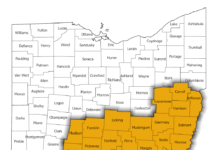If you’re like me and millions of other across the globe, you spend the last weeks of December making resolutions for the new year.
Every year I make resolutions for my personal life and my professional life on the farm. Although you don’t need a New Year to make resolutions, January 1 is a motivating date to jump-start. It is also an easy date to remember when reflecting back on progress.
Identify what needs improvement
Related: Part II: Tips for keeping New Year’s resolutions for the farm
Time management, herd genetics, forage, infrastructure? Identifying areas of the farm in need of improvement is not difficult for most farmers. Deciding which areas to focus resolutions on IS.
Making too many resolutions sets you up to feel discouraged and overwhelmed. 2-3 specific and measurable resolutions is realistic and will help you stay focused throughout the New Year.
I decide which areas to focus my resolutions on by making a list of all the farm improvements I’d like to make, then choosing the 3 that will improve my profits and productivity the most. I have found the benefits of better profits and greater productivity spill over into all other areas of the farm.
Whatever you choose to focus your resolutions on, be honest with yourself. Make resolutions that you really want to achieve; don’t bother making ‘should’ goals that your heart isn’t in.
Define goals
I want to make my small farm more sustainable, but ‘improve my farm’s sustainability’ is a broad and vague resolution. Defining a goal makes it more specific and measurable. Furthermore, defining a goal helps pinpoint a process to achieve it.
A specific and measurable goal to improve my farm’s sustainability is to plant crop varieties that are well-suited to my soil and climate, and more naturally resistant to local pests and plant diseases. The goal is specific because it is clearly defined to deliver the result I want. It is measurable because I can calculate sustainable savings on inputs: irrigation, soil amendments and pest management.
Plan-of-action
A defined goal and thought-out plan of action increases your chance of success. To create a plan of action, list what you must do in order to achieve your goal. Include necessary resources, finances and time you will need achieve your resolution if required.
In order to plant crop varieties that are well-suited to my soil and climate, and more naturally resistant to local pests and plant diseases I will:
- Test soil composition, nutrients and pH.
- Research vegetable varieties to determine best-suited.
- Do NOT plant old favorites that are ineffective, time-consuming and a drain on resources.
- Keep input and plant performance notes throughout the season. Assess findings and utilize results for future planning.
- Save seeds to further develop crop resilience.
Take the first step
Once you have clearly defined your goal and created a plan-of-action, take the first step.
My first step is always to write resolutions down. The act of putting my resolutions to paper makes goal setting more meaningful and motivates me to get started. Next, proceed with your plan-of-action. Take pride in your progress- you deserve it.
Next week I’ll share tips to keep you on track to achieve your New Year resolutions for the farm.












